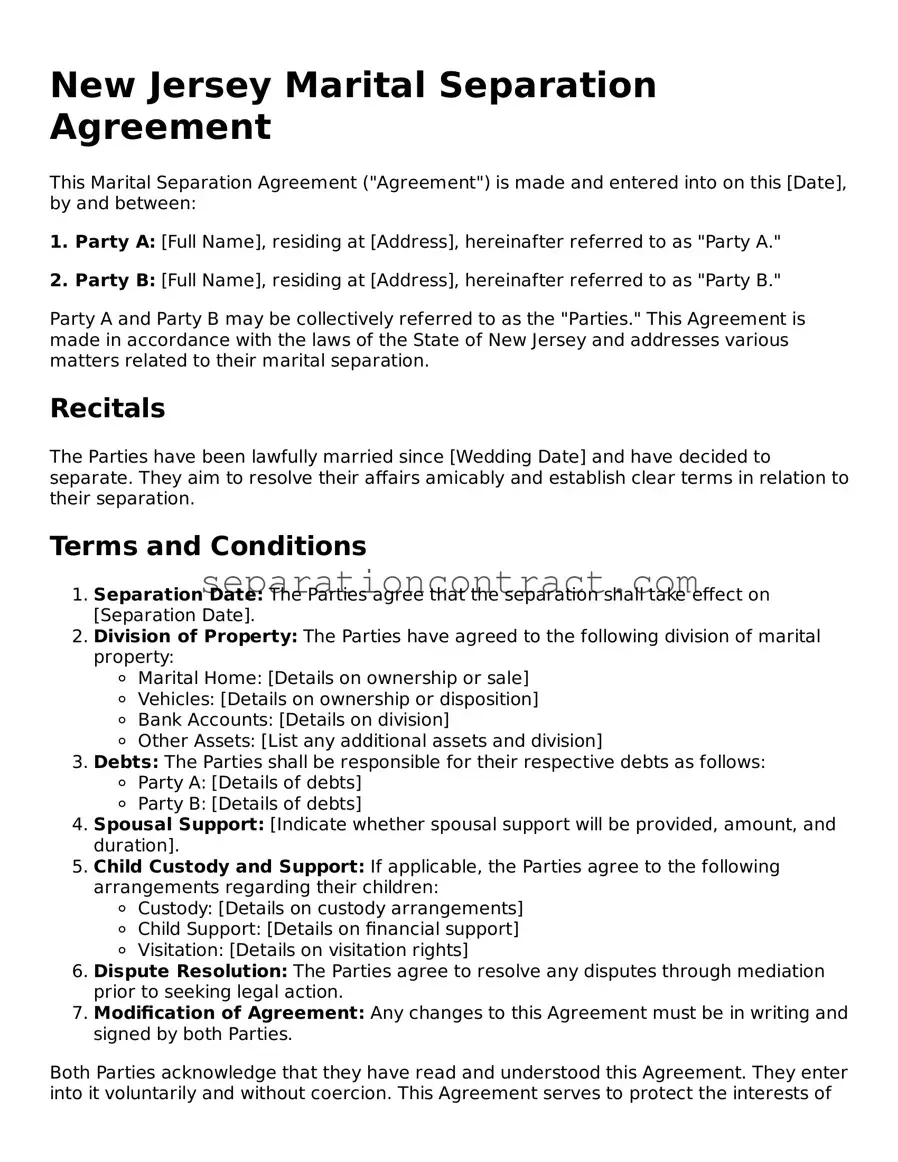Filling out the New Jersey Marital Separation Agreement form can be a daunting task. Many individuals make mistakes that could lead to complications down the road. One common error is failing to include all necessary information. This includes not only personal details but also financial information, property assets, and any child custody arrangements. Omitting this information can create confusion and disputes later.
Another mistake is not being clear about the terms of the separation. Vague language can lead to misunderstandings. It's essential to specify the exact terms regarding support payments, property division, and other critical issues. Clarity is key to ensuring that both parties understand their rights and responsibilities.
People often overlook the importance of reviewing the agreement with a legal professional. While it may seem straightforward, having a lawyer can help identify potential pitfalls. They can provide insights that individuals may not have considered, ensuring that the agreement is fair and comprehensive.
Some individuals make the mistake of assuming that the agreement is permanent. In reality, circumstances can change. It’s crucial to include provisions for future modifications. This foresight can save time and effort if either party’s situation changes significantly.
Another frequent error is neglecting to consider tax implications. Property division and support payments can have tax consequences. Understanding these implications can prevent unexpected financial burdens in the future.
Additionally, people sometimes forget to include a plan for dispute resolution. Conflicts may arise after the separation, and having a clear process in place can help both parties navigate these challenges without escalating tensions.
Finally, many fail to sign the agreement in front of a notary. This step is vital for the document's legal validity. Without proper notarization, the agreement may not hold up in court, leading to further complications.
